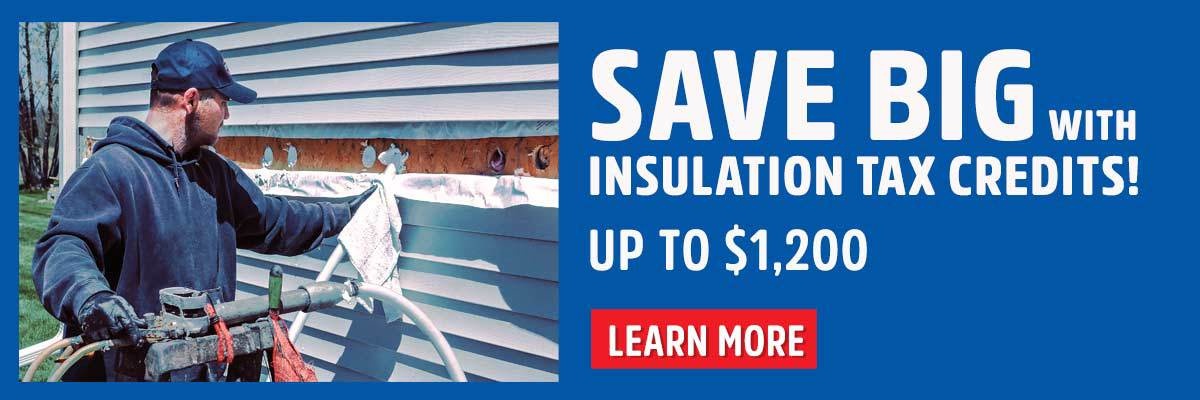How Much Money Will Foam Insulation Save on Monthly Energy Bills?


You're looking to lower your monthly energy bills, and you’ve heard foam insulation is the way to go, but you have questions about the savings?
Foam insulation can definitely save you money when compared to traditional insulation like fiberglass or cellulose, but the exact amount will vary depending on several factors.
After insulating thousands of homes in Michigan’s lower peninsula and the greater Toledo area, RetroFoam of Michigan has seen customers save anywhere between 15 to 50 percent on their monthly energy bills depending on those factors, more specifically if you only have one area insulated compared to the entire home.
We're in the foam insulation business, but we're also in the educating homeowners business. In this article, we'll cover why the foam's air seal makes a difference, how the areas of the home insulated makes a difference, and what factors determine how much you'll save on those monthly energy bills.
How Does Spray Foam Save You Money?
There is one component of what spray foam insulation has to offer that really plays a role in saving money on heating and cooling costs -- the air seal it creates.
In 2015, 51 percent of a household's annual energy consumption was for two necessary seasonal things -- space heating and air conditioning, according to the U.S. Energy Information Administration. Now imagine if either of those things is running constantly because you can't maintain a constant temperature in your home.
If your home can't maintain a constant temperature and you have uncomfortable rooms, this is because the air you pay to heat or cool is leaking outside, while the outside air is leaking inside.
This is where spray foam insulation comes in clutch because the air seal it creates keep the inside air indoors and the outside elements out where they belong.
Reducing air leakage by air sealing your home's building envelope from the top to the bottom with the proper insulation is just one of the ways the U.S. Department of Energy suggests lowering your monthly energy bills.
When compared to traditional insulation, foam is the only material that can provide that complete air seal throughout the home.
How Much Can You Save on Monthly Energy Bills with Spray Foam?
The amount of money you can save on your monthly energy bills varies, but we have had homeowners tell us they saved anywhere between 30 to 50 percent when their entire home was insulated.
Every little bit that you save on heating and cooling costs is great, but there's still more to think about.
You'll also save money in the long run because when you have foam insulation installed throughout your home, it's a one and done job. That's not the case if fiberglass or cellulose is in the house.
Fiberglass and cellulose both will breakdown, sag, settle, and shift over time. This means the cellulose has to be regularly maintained, and the fiberglass will need to be eventually replaced.
Foam insulation never breaks down, it never shifts or sags, and it will never have to be replaced because it's gotten old. This in and of itself is going to save you money over time because you won't have to deal with those replacement costs.
Factors that Determine Monthly Energy Bill Savings
Now we mentioned above that homeowners have said they saved between 30 and 50 percent on their monthly energy bills, but what is it that makes the difference?
There are a few factors that will impact the amount you save on those monthly bills. Let's take a look at your HVAC system, AC unit and furnace, windows and doors, and the areas of your home that you had insulated with foam.
HVAC System and Ducts
If you haven't had your HVAC system and ducts cleaned and maintained in a while, it's likely costing you money.
This is a system you need to run as efficiently as possible if you want an energy efficient house.
Adding foam insulation throughout the house gives you the air seal you want, but if your HVAC system isn't maintained and tuned up, then you'll end up paying for it.
It's important to make sure you service your furnace and AC unit every year. This includes cleaning the mechanicals, putting in clean filters, and cleaning out the ducts in your home.
Making sure this annual maintenance is done will ensure these units run more efficiently. A more efficient AC unit and furnace means more money in your pocket when coupled with foam insulation.
AC Unit and Furnace
Now a little more on these mechanicals.
Do you find yourself setting your air conditioner super low in the summer and your furnace really high in the winter? These are two things that can also impact the amount you save after having your entire home spray foamed.
The air seal that foam creates means that air you're treating is going to stay inside where you want it. There will no longer be the need to constantly adjust your AC or furnace to keep your home comfortable.
There are a few tips from the Department of Energy that can help you keep your AC unit and furnace in check.
Turning your thermostat back 7 to 10 degrees for 8 hours a day can save you around 10 percent each month on your heating and cooling costs. You can set that temperature for when you're at work or when you sleep. In the winter you could set your thermostat at 68 degrees and in the summer you could set it at 78 degrees.
One thing to keep in mind is that blasting either appliance in an attempt to quickly cool off or heat up your home won't work the way you think it might. This won't make any difference in the amount of time to make your home comfortable and will end up adding even more cost to your monthly bills.
Windows and Doors
Even after having foam insulation installed in your home, if your windows and doors are not efficient, it's just more money leaking out of your home.
In the winter you can literally feel the cold air coming in through and around the windows and doors, and the same is true in the summer.
Air sealing your home can only go so far if the rest of your home isn't efficient as well. If air is leaking through your doors and windows, then your AC unit and furnace will run constantly to keep your home comfortable. That constant running will lead to less savings from the air seal created by the foam.
Areas in the Home Insulated with Foam
You won't see the same kind of savings on your monthly energy bills if you only insulate one part of your home with foam insulation.
That's not to say you can't start with sections of your home to start, but if you really want the biggest savings, the entire home is the way to go.
Let's say you decide to insulate your walls first, or just your walls only. This can lead to a problem called stack effect.
Stack effect is air movement that causes high energy bills and uncomfortable homes. Outdoor air moves into your home through the crawl space, then up through to your living space. Your walls are insulated with foam, so it's not getting out there, so the air builds up pressure and keeps moving up, taking your treated air with it. The air movement continues up to the attic and right out through the roof.
This is just one of the reasons we suggest insulating the entire home, creating an air seal of the entire building envelope to stop this kind of air movement.
Reducing Monthly Energy Bills with Foam Insulation
As you can see, foam insulation can reduce your monthly energy bills, but there's more to consider than just adding the foam insulation.
If you're looking to make your home more energy efficient, it doesn't hurt to contact your energy provider and look into having a home energy audit done. The home energy audit will look at your appliances to determine if they are efficient, a blower door test will be done in search of air leaks, and the auditor will look for gas leaks and the exhaust coming from your appliances.
Taking the leap to add foam will reduce your bills, and so will taking the necessary steps to make your home more energy efficient as a whole.
Related Articles
R-Value vs Air Seal: What is More Important When Buying New Insulation?
5 Common Comfort and Energy Bill Savings According to RetroFoam of Michigan Reviews
About Amanda Emery
Amanda previously has worked as a breaking news and crime reporter, TV news producer, and editor in Flint and Detroit. Throughout her career as a journalist, she has won several awards from The Society of Professional Journalists - Detroit Chapter and the Michigan Press Association. As part of the RetroFoam of Michigan family, Amanda uses her experience as a journalist to write content that will help educate homeowners on the benefits of foam insulation. When Amanda isn’t writing, she’s spending time with her husband and rescued huskies. She also loves knitting, making art, cooking, and hosting dinner and a movie night for friends and family.



